Engage NY Eureka Math 1st Grade Module 2 Lesson 26 Answer Key
Eureka Math Grade 1 Module 2 Lesson 26 Problem Set Answer Key
![]() ten. Write the number. How many tens and ones?
ten. Write the number. How many tens and ones?
Question 1.

Answer:

Explanation:
In the above image we can see that there are totally three hands. The first two hands together with five fingers each contributes to a ten(5+5) and the single hand with 5 fingers contributes to 5 ones. Draw a circle for ten fingers. Total fingers are fifteen. Fifteen is same as one ten and five ones.
Question 2.

Answer:

Explanation:
In the above image we can observe some insects. Count all insects and draw a circle for ten insects. Total number of insects are twelve. Twelve is same as one ten and two ones.
Question 3.

Answer:

Explanation:
In the above image we can observe some butterflies. Count all butterflies and draw a circle for ten butterflies. Total number of butterflies in the image are seventeen. Seventeen is same as seven ones and one ten.
Question 4.

Answer:

Explanation:
In the above image we can observe some sticks. Count total number of sticks and draw a circle for ten sticks. Total number of sticks are thirteen. Thirteen is same as one ten and three ones.
Question 5.

Answer:

Explanation:
In the above image we can observe some crayons. Count total number of crayons and draw a circle for ten crayons. Total number of crayons are seventeen. Seventeen is same as one ten and seven ones.
Show the total and tens and ones with Hide Zero cards.
Write how many tens and ones.
Question 6.

Answer:

Explanation:
In the above image we can observe hide zero cards. Count the total number of dots on the line and also count the number of dots next to it. There are ten dots on the line and two dots next to it. We can observe ten on longer card and two on short card. Total number of dots are twelve. Ten dots in one column and two dots in another column. Twelve is same as one ten and two ones.
Question 7.

Answer:

Explanation:
In the above image we can observe hide zero cards. Count the total number of dots on the line and also count the number of dots next to it. There are ten dots on the line and four dots next to it. We can observe ten on longer card and four on short card. Total number of dots are fourteen. Ten dots in one column and four dots in another column. Fourteen is same as one ten and four ones.
Question 8.

Answer:

Explanation:
In the above image we can observe hide zero cards. Count the total number of dots on the line and also count the number of dots next to it. There are ten dots on the line and nine dots next to it. We can observe ten on longer card and nine on short card. Total number of dots are nineteen. Ten dots in one column and nine dots in another column. Nineteen is same as one ten and nine ones.
Draw the circles as a ten and extra ones. How many tens and ones?
Question 9.

Answer:

Explanation:
In the above image we can observe sixteen. Sixteen is made of ten and six. We can observe ten on the longer card and six on the short card. We need to draw ten dots on the line. That shows we have a full set of ten. Then we need to draw six dots next to it for the other six. Total number of dots are sixteen. Sixteen is same as one ten and six ones.
Question 10.

Answer:

Explanation:
In the first image we can observe twelve cupcakes. We need to draw ten dots on the line. That shows we have a full set of ten. Then we need to draw two dots next to it for the other two. Total number of dots are twelve. Twelve is same as one ten and two ones.
In the second image we can observe fifteen different types of balls. We need to draw ten dots on the line. That shows we have a full set of ten. Then we need to draw five dots next to it for the other five. Total number of dots are fifteen. Fifteen is same as one ten and five ones.
Eureka Math Grade 1 Module 2 Lesson 26 Exit Ticket Answer Key
Match the pictures of tens and ones to the Hide Zero cards. How many tens and ones?

Answer:
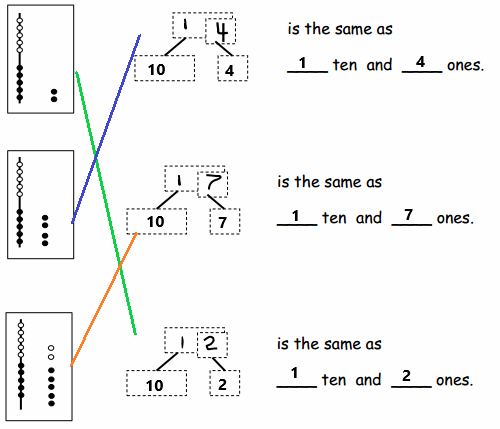
Explanation:
1. In the above image we can observe twelve. Twelve is made of ten and two. We can observe ten on the longer card and two on the short card. We can observe ten dots on the line. That shows we have a full set of ten. Then we observe two dots next to it for the other two. Total number of dots are twelve. Twelve is same as one ten and two ones. The first Picture matches with the third picture on right side.
2. In the above image we can observe fourteen. Fourteen is made of ten and four. We can observe ten on the longer card and four on the short card. We can observe ten dots on the line. That shows we have a full set of ten. Then we observe four dots next to it for the other four. Total number of dots are fourteen. Fourteen is same as one ten and four ones. The second Picture matches with the first picture on right side.
3. In the above image we can observe seventeen. Seventeen is made of ten and seven. We can observe ten on the longer card and seven on the short card. We can observe ten dots on the line. That shows we have a full set of ten. Then we observe seven dots next to it for the other seven. Total number of dots are seventeen. seventeen is same as one ten and seven ones. The third Picture matches with the second picture on right side.
Eureka Math Grade 1 Module 2 Lesson 26 Homework Answer Key
Circle ten. Write the number. How many tens and ones?
Question 1.

Answer:

Explanation:
In the above image we can observe a group of coins is a set of ten. Draw a circle for ten coins. There are only eight other coins, so we do not have enough to make another ten. That’s one ten and eight ones, which is the same as eighteen.
Question 2.

Answer:

Explanation:
In the above image we can observe a group of coins is a set of ten. Draw a circle for ten coins. There are only seven other coins, so we do not have enough to make another ten. That’s one ten and seven ones, which is the same as seventeen.
Use the Hide Zero pictures to draw the ten and ones shown on the cards.

Question 3.
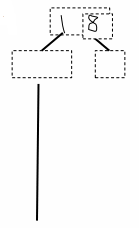
____ ten and ____ ones
Answer:

1 ten and 8 ones.
Explanation:
In the above image we can observe eighteen. Eighteen is made of ten and eight. We can observe ten on the longer card and eight on the short card. We need to draw ten dots on the line. That shows we have a full set of ten. Then we need to draw eight dots next to it for the other eight. Total number of dots are eighteen. Eighteen is same as one ten and eight ones.
Question 4.
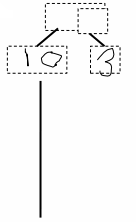
____ ten and ____ ones
Answer:

1 ten and 3 ones
Explanation:
In the above image we can observe thirteen. Thirteen is made of ten and three. We can observe ten on the longer card and three on the short card. We need to draw ten dots on the line. That shows we have a full set of ten. Then we need to draw three dots next to it for the other three. Total number of dots are thirteen. Thirteen is same as one ten and three ones.
Draw using 5-groups columns to show the tens and ones.
Question 5.
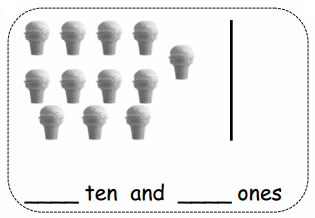
Answer:

Explanation:
In the above image we can observe some ice-creams. Draw a 5- group columns. We can line up ten dots in a column. Then put a line through them to show they are one ten. Count total number of ice-creams. There are twelve ice-creams. We need twelve altogether. Draw two more dots in a new column. Twelve is the same as one ten and two ones.
Question 6.
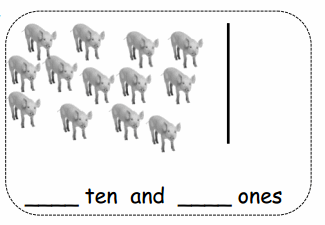
Answer:

Explanation:
In the above image we can observe some pigs. Draw a 5- group columns. We can line up ten dots in a column. Then put a line through them to show they are one ten. Count total number of pigs. There are thirteen pigs. We need thirteen altogether. Draw three more dots in a new column. Thirteen is the same as one ten and three ones.
Draw your own examples using 5-groups columns to show the tens and ones.
Question 7.
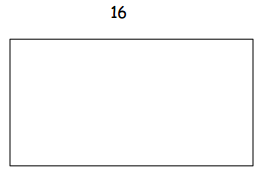
16 is the same as
___ ten and ____ ones.
Answer:

16 is the same as
1 ten and 6 ones.
Explanation:
In the above image we can observe 5- group columns. We can line up ten dots in a column. Then put a line through them to show they are one ten. We need sixteen altogether. We can draw six more dots in a new column. Sixteen is the same as one ten and six ones.
Question 8.

19 is the same as
__ ones and __ ten.
Answer:
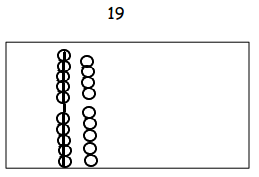
19 is the same as
1 ones and 9 ten.
Explanation:
In the above image we can observe 5- group columns. We can line up ten dots in a column. Then put a line through them to show they are one ten. We need nineteen altogether. We can draw nine more dots in a new column. Nineteen is the same as one ten and nine ones.
Eureka Math Grade 1 Module 2 Lesson 26 Template Answer Key
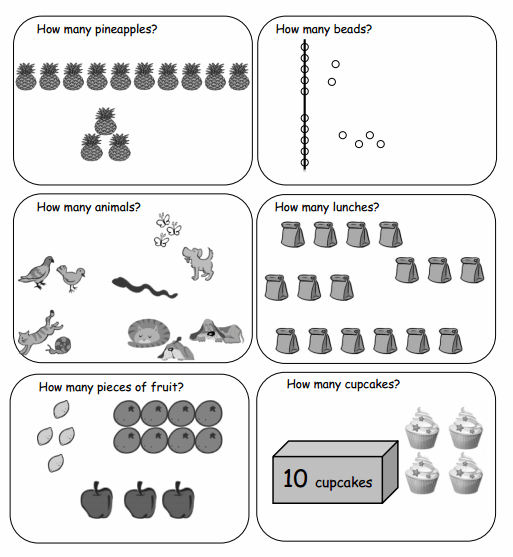
Answer:

Explanation:
In the first image we can observe some pineapples. Count total number of pineapples in that image. Total number of pineapples are thirteen.
In the second image we can observe some beads. Count total number of beads in that image. Total number of beads are sixteen.
In the third image we can observe some animals. Count total number of animals in that image. Total number of animals are ten.
In the fourth image we can observe some lunches. Count total number of lunches in that image. Total number of lunches are sixteen.
In the fifth image we can observe some pieces of fruits. Count total number of pieces of fruits in that image. Total number of pineapples are fifteen.
In the sixth image we can observe some cupcakes. Count total number of cupcakes in that image. Total number of cupcakes are fourteen.